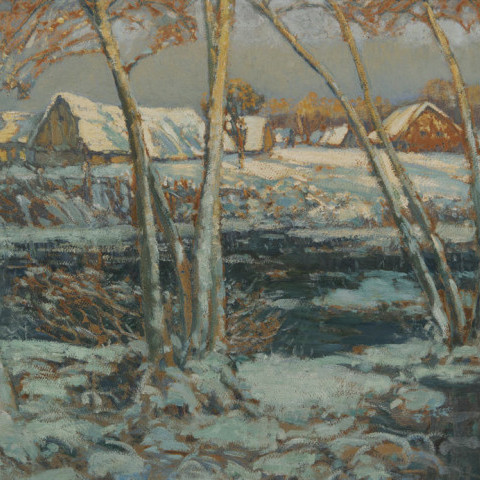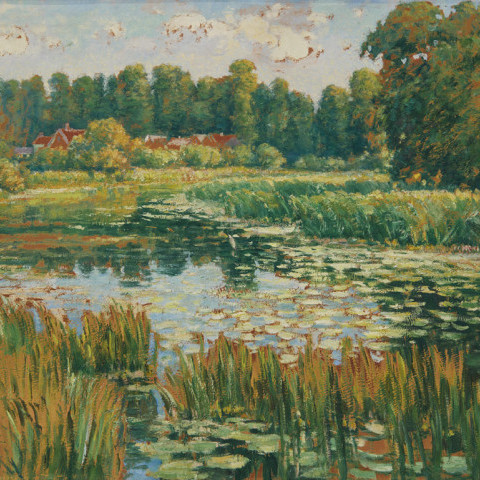Václav Jan Emanuel Radimský was a Czech impressionist painter who resided in France at the turn of the 19th and the first half of the 20th century. He was strongly influenced by the French Impressionists and is considered one of the most important representatives of Czech impressionism.
Radimský was born in Kolín, Czech Republic in 1867 and was the son of lawyer and politician Václav Radimský. He studied landscapes with Eduard von Lichtenfels at the “Akademie der Bildenden Künste” in Vienna and in Munich with Eduard Schleich at the "Akademie der Bildenden Künste".
In 1889, he moved to France, arriving in Paris, where the painter Zdenka Braunerová took him in and introduced him to the artistic community of French colleagues. Radimský then settled in Barbizon, near Fontainebleau, and later moving on to Giverny after becoming acquainted with Claude Monet and Camille Pissaro. This impressionist group of artists in Giverny had a lasting impact on his style. Radimský rented the old La Bergamotte mill on the Seine River in the village of Le Goulet, maintained a floating studio, and occasionally painted alongside Monet. His Impressionist landscape paintings of the Northern French countryside attracted attention early in his career and became a commercial success.
From 1892 on he exhibited at the Paris Salon. In 1894, Radimský exhibited at the Salons in Paris and was awarded the Etudes de Fougeres painting as the youngest painter. During this time, he also sent his paintings home to Bohemia.
He was the first Czech painter to have direct contact with French Impressionism, winning medals in Rouen in 1895, and at the World's Fair in Paris in 1900. From 1900 on, he exhibited in Prague, Vienna, Berlin, Düsseldorf and Leipzig.
A year earlier, in 1899, he first presented himself in Prague at the Topič Salon. The art critic of the time, KB Mádl, had observed his work and was able to write about how his painting had changed over the years. How bright color and light had entered his paintings in Normandy and turned into pure impressionism. The dark shades of the forests near Barbizon had transformed into the green, blue, and yellow hues of Le Goulet.
While in France he gained a considerable fortune selling his paintings, however, his life in France became severely affected by World War I, suddenly becoming a citizen of an enemy country. The French arrested and imprisoned him after the outbreak of the war, though several friends and important figures were able to help him gain his freedom. He spent the war at home in Le Goulet.
After the war, Radimský returned to Czechoslovakia, focusing on landscapes of the River Elbe region.
Radimský died in January 31, 1946 in Pasinka, Bohemia, Czech Republic.
Radimský’s works are in many private collections, as well as public collections and institutions, such as:
The Munich Pinakothek.
National Gallery Prague
Olomouc Archdiocesan Museum
Museum of Vernon AG Poulain
Czech Savings Bank



